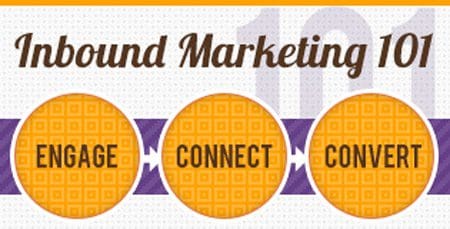
What is Inbound Marketing and How Does it Work?

Marketing has taken on a whole new life. With the advent of technologies that have made connecting with once hard to reach audiences effortless, strategies have shifted and new tactics have emerged.
Outbound marketing, a somewhat archaic form of marketing communications, has taken a back seat to its more hip cousin inbound marketing. Practices like ad buying and mass emailing are now considered somewhat invasive to our sensitive consumer proclivities. Inbound marketing offers a softer approach to connecting with a target audience. Rather than forcing your brand into an Inbox you are putting quality content in the places people naturally go. It is marketing for the people; they seek you out, instead of you randomly shooting in the dark.
A few examples of inbound marketing include: blogs, press releases, social media posts and web pages. All these elements are designed to engage customers with your brand by sharing relevant content. In other words engagement is the users prerogative. They will only come across your content if they happen to be in a place it is being shared and it is written in a way that speaks directly to their needs.
Inbound Marketing in Action
All of these tactics can be combined into one magnificent inbound marketing campaign. It takes some time and research, but the process is simple. A successful inbound marketing campaign incorporates a number of steps. You must take time to understand your audience and what is important to them. Once you have a clear picture of what they want, deliver that content through the correct mediums. Make sure you are sharing in all the right places and use the most ethical search engine optimization and marketing practices to get your content noticed without suffering penalties.
Ideally, people will return to the place where they found your content; whether it be a blog, a Facebook page or a website. The next step is providing visitors with additional tools they can use to connect with your brand directly, such as contact forms on landing pages and calls to action. If all goes well, you make a conversion new clients, new fans, new followers.
The process does not stop with conversion. Once you land a customer you need to keep the content coming. Inbound marketing attempts to create a relationship with the audience; it is the essence of two-way marketing communications. You work to position yourself not as a company, but a brand consciously involved and invested in your audience’s interests and what makes them tick.
Inbound marketing isn’t easy; it is a long-term process. It takes time to learn who your audience is, what channels they are using and how to effectively use search engine optimization to deliver what they need, where they need it. This is a very brief overview of inbound marketing. There are several other details to consider we did not cover, like local customers versus non-local, researching the competition and directory listings.
The most important thing to remember is that inbound marketing never stops; it is a living and evolving methodology and it is the driving force behind modern marketing communications.